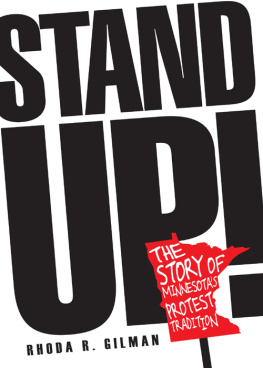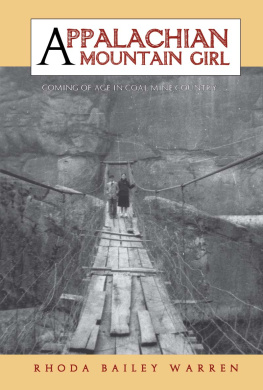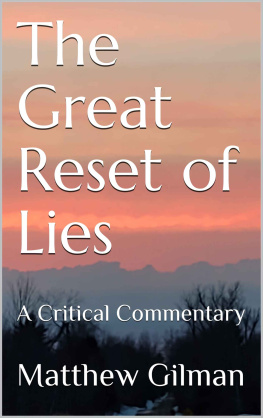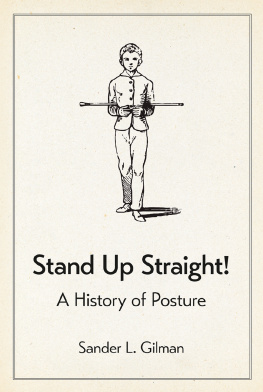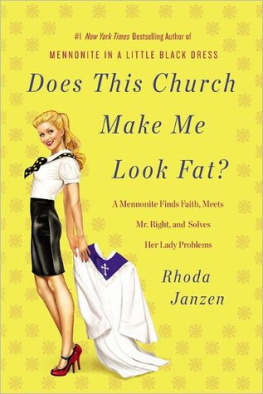Rhoda R. Gilman - Stand Up!: The Story of Minnesotas Protest Tradition
Here you can read online Rhoda R. Gilman - Stand Up!: The Story of Minnesotas Protest Tradition full text of the book (entire story) in english for free. Download pdf and epub, get meaning, cover and reviews about this ebook. genre: Politics. Description of the work, (preface) as well as reviews are available. Best literature library LitArk.com created for fans of good reading and offers a wide selection of genres:
Romance novel
Science fiction
Adventure
Detective
Science
History
Home and family
Prose
Art
Politics
Computer
Non-fiction
Religion
Business
Children
Humor
Choose a favorite category and find really read worthwhile books. Enjoy immersion in the world of imagination, feel the emotions of the characters or learn something new for yourself, make an fascinating discovery.
- Book:Stand Up!: The Story of Minnesotas Protest Tradition
- Author:
- Genre:
- Rating:4 / 5
- Favourites:Add to favourites
- Your mark:
- 80
- 1
- 2
- 3
- 4
- 5
Stand Up!: The Story of Minnesotas Protest Tradition: summary, description and annotation
We offer to read an annotation, description, summary or preface (depends on what the author of the book "Stand Up!: The Story of Minnesotas Protest Tradition" wrote himself). If you haven't found the necessary information about the book — write in the comments, we will try to find it.
Stand Up!: The Story of Minnesotas Protest Tradition — read online for free the complete book (whole text) full work
Below is the text of the book, divided by pages. System saving the place of the last page read, allows you to conveniently read the book "Stand Up!: The Story of Minnesotas Protest Tradition" online for free, without having to search again every time where you left off. Put a bookmark, and you can go to the page where you finished reading at any time.
Font size:
Interval:
Bookmark:

From Farmer-Labor Leader, January 15, 1930
The Story
of Minnesotas
Protest Tradition
Rhoda R. Gilman

2012 by Rhoda R. Gilman. All rights reserved. No part of this book may be used or reproduced in any manner whatsoever without written permission except in the case of brief quotations embodied in critical articles and reviews. For information, write to the Minnesota Historical Society Press, 345 Kellogg Blvd. W., St. Paul, MN 55102-1906.
www.mhspress.org
The Minnesota Historical Society Press is a member of the Association of American University Presses.
Manufactured in the United States of America
10 9 8 7 6 5 4 3 2 1
 The paper used in this publication meets the minimum requirements of the American National Standard for Information SciencesPermanence for Printed Library Materials, ANSI Z39.481984.
The paper used in this publication meets the minimum requirements of the American National Standard for Information SciencesPermanence for Printed Library Materials, ANSI Z39.481984.
International Standard Book Number
ISBN: 978-0-87351-849-9 (paper)
ISBN: 978-0-87351-857-4 (e-book)
Library of Congress Cataloging-in-Publication Data
Gilman, Rhoda R.
Stand up! : the story of Minnesotas protest tradition / Rhoda R. Gilman. p. cm.
Includes bibliographical references and index.
ISBN 978-0-87351-849-9 (paper : alk. paper) ISBN 978-0-87351-857-4 (e-book)
1. Protest movementsMinnesotaHistory. 2. MinnesotaSocial conditions. 3. MinnesotaPolitics and government 4. Progressivism (United States politics)History. 5. Social reformersMinnesotaBiography. 6. Political activistsMinnesotaBiography. 7. MinnesotaBiography. I. Title.
HN79.M6G55 2012
322.409776dc23
2011040232
Image page 12, Library of Congress.
Photo page 145, Avye Alexandres.
All other images from Minnesota Historical Society collections.
Minnesota is a state spectacularly varied, proud,
and handsome, with a progressive political tradition
It is a state pulled toward East and West both,
and one always eager to turn the world upside down.
John Gunther, Inside USA (1947)
Some regard Minnesotas political culture as moralistic and some see it as radical, but most would agree that it has been a seedbed for cultural and political movements that have changed the country, and its history weaves a pattern of wide opposition between left and right. This tension may account for the frequent presence of alternative parties and electoral experiments. As a historian and political activist, I have often been asked such questions as: Why are Minnesota Democrats called the DFL?Have we always had third parties?and Who was Ignatius Donnelly?Floyd Olson?Gus Hall? Yet there has been no brief, readable work that would summarize the story and answer those factual questions. After working for many years as a Minnesota historian and taking part in struggles for social change during my own times, I have tried here to provide one.
This is a story of successive protest movements, including political parties and other organizations that have sought to gain power within the state and to shape its government along with its social and economic patterns. It is a story of conflict and defeat, of change and tenacity. I have tried to give enough of the historical framework to make the context clear and the movements understandable, but I have left interpretation and analysis to deeper and more detailed studies. There are plenty of those. Some are listed in the bibliography at the end of the book.
Power in American society is about wealth, so the root of most protest has been economic. Nevertheless, there have been demands for racial, religious, ethnic, or gender rights, and those have sometimes divided or derailed movements that were formed along lines of economic power. Protest can be conservative as well as radical, and if radicalism is defined as rapid change at the roots, then many of Minnesotas protest movements have been conservative in the sense of struggling to preserve the local control and small-scale business of an agrarian society against the steady march of corporate industry and the concentration of wealth.
Movements based on single issues, such as prohibition or abortion, have enlisted strong passions and have raised serious questions about the fairness of the American two-party system and its electoral laws. More broadly based small parties have challenged those laws with proposals to replace plurality (winner take all) voting with a system based on ranked choice. With its persistent small-party tradition, it is no wonder that Minnesota has been in the forefront of that effort.
An exception to the usual pattern of protest has been the long and continuing fight to secure equality for women. This fight has coincided almost exactly with the existence of Minnesota as a territory and state, but it is far wider than just giving votes and political office to women. Like the struggle to save the earths environment, which has only begun, the empowerment of women affects customs and religious beliefs that have endured through many generations of human society. Ecofeminists see a profound relationship between the status of women and that of the earth. As we look ahead, the preservation of the planets living systems seems certain to demand fundamental changes not only in our politics but in the values that underlie our industrial civilization. One such change is likely to be the increased importance of a local economy and hence of local government. So the story of Minnesotas protest heritage may be more significant to readers in the next century than in the last one.
As the timeline of history merges into the present, the landscape flattens and it is hard to know which peaks and valleys will stand out as we move beyond them. At the same time, it can be instructive for a historian to come off her perch as an observer and to take responsibility for her place as an actor. My involvement with the Green Party has made me part of the developments discussed in the last chapters. But journalists are not the only ones who write the first drafts of history, and I describe Minnesotas recent protest movements in order to place them firmly in the context of the states protest traditionand to draw lessons about their meaning.
Minnesota politics began when the territory was organized. The year was 1849. The United States had just invaded Mexico and taken the northern third of the country, including California. The gold rush there was in full swing. But the real gold of the great West was, and always had been, its land.
The forests and prairies and mountains were sacred to Indian people, but in a very different way they were also sacred to the hoards of squatters and sodbusters who were ready to take them and turn them into ranches and farms and towns. The convictions of those eager immigrants were captured in a set of verses printed in one of St. Pauls first newspapers:
Sunlight and music, and gladsome flower,
Are over the earth spread wide;
And the good God gave those gifts to men
To men who on earth abide.
Yet thousands are toiling in poisonous gloom,
And shackled with iron bands,
Yet millions of hands want acres,
And millions of acres want hands.
Tis writ that ye shall not muzzle the ox,
That treadeth out the corn.
Yet behold ye shackle the poor mans hand
That have all earths burdens borne;
Font size:
Interval:
Bookmark:
Similar books «Stand Up!: The Story of Minnesotas Protest Tradition»
Look at similar books to Stand Up!: The Story of Minnesotas Protest Tradition. We have selected literature similar in name and meaning in the hope of providing readers with more options to find new, interesting, not yet read works.
Discussion, reviews of the book Stand Up!: The Story of Minnesotas Protest Tradition and just readers' own opinions. Leave your comments, write what you think about the work, its meaning or the main characters. Specify what exactly you liked and what you didn't like, and why you think so.

